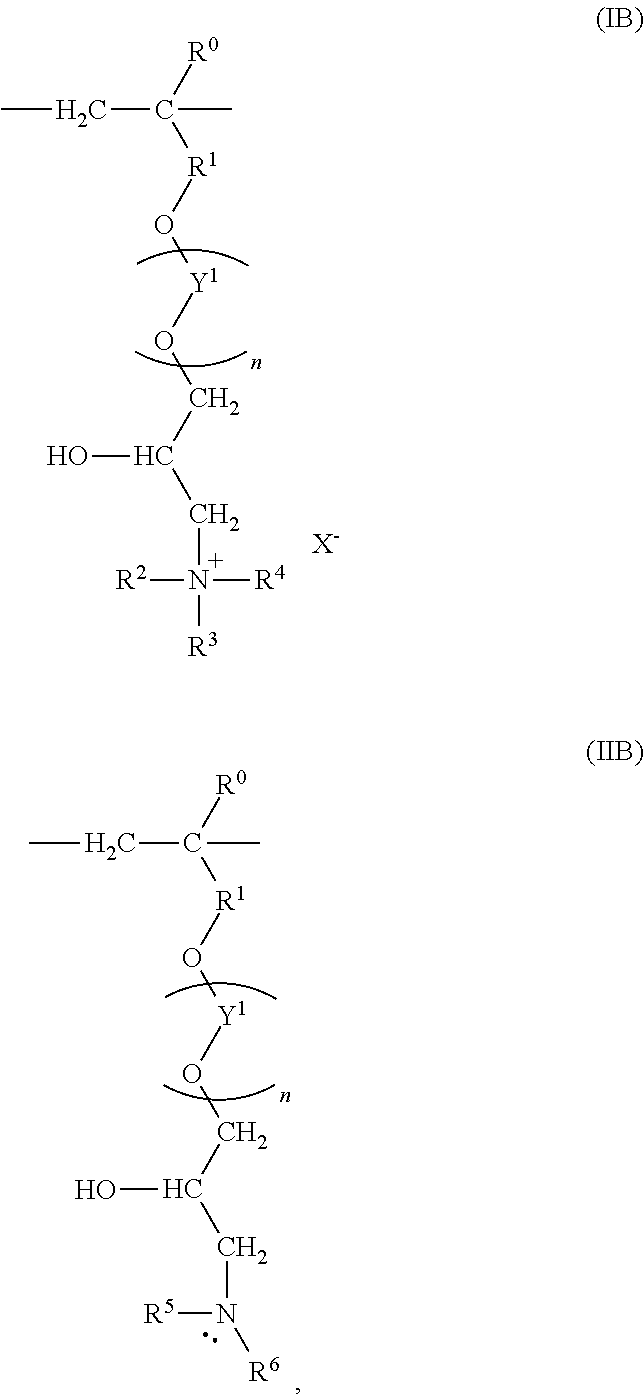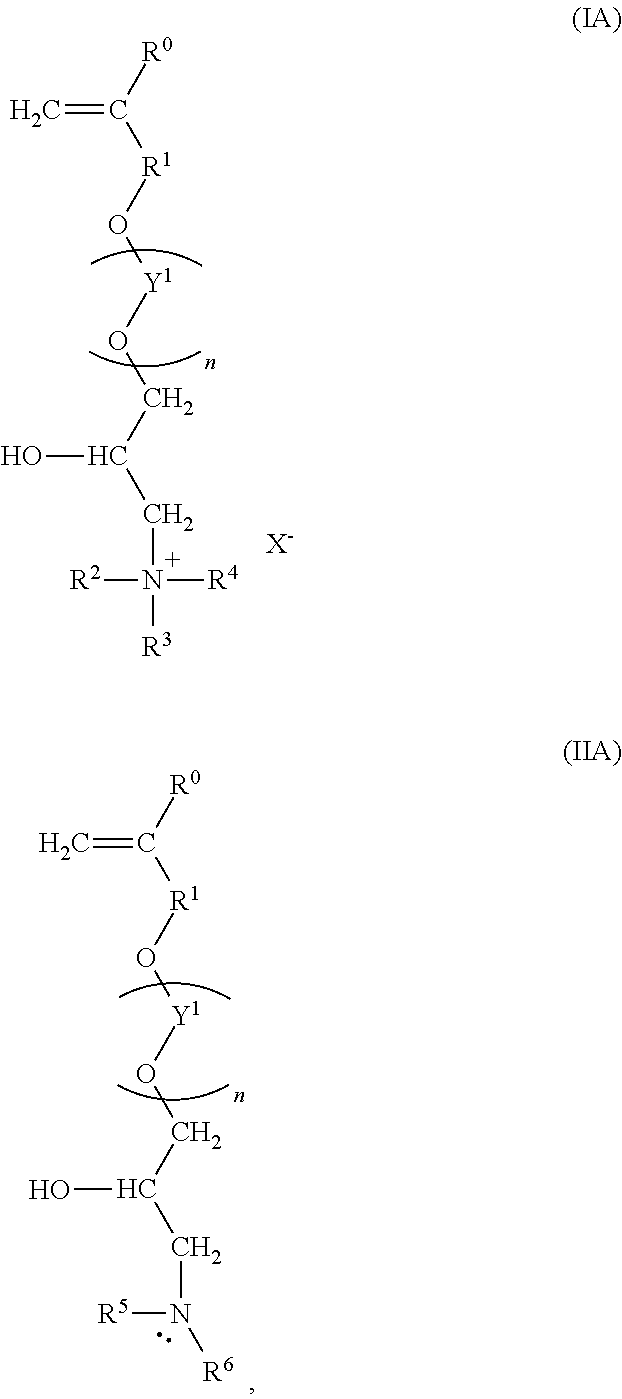Cleaning Compositions With Amphoteric Polycarboxylate Polymers
- Summary
- Abstract
- Description
- Claims
- Application Information
AI Technical Summary
Benefits of technology
Problems solved by technology
Method used
Image
Examples
synthesis example 1
[0121]In a 1-L 4-neck flask, IPN 10 (400 g), epichlorohydrin (351.4 g), and 48% by mass aqueous solution of sodium hydroxide (hereinafter, also referred to as 48% NaOH) (94.9 g) are reacted under stirring for six hours at a controlled temperature of 50° C. Thereafter, the generated salt is removed and epichlorohydrin and water are removed from the remaining organic phase such that a reaction solution (451.2 g) containing an intermediate (IPEG 10) (324.9 g) and IPN 10 (64.1 g) is provided. Subsequently, the reaction solution (451.2 g) containing IPEG 10 (324.9 g) and 30% by mass aqueous solution of trimethylamine chloride (268.7 g) are reacted in the 1-L 4-neck flask for eight hours at a controlled temperature of 50° C. such that a reaction solution (hereinafter, referred to as monomer composition (1)) (719.9 g) containing cationized IPN 10 (hereinafter, also referred to as IPEC 10) (336.4 g) and IPN 10 (63.8 g) is provided.
synthesis example 2
[0122]In a 1-L 4-neck flask, IPN 25 (500 g), epichlorohydrin (233.7 g), and NaOH in the pellet form (25.3 g) are reacted under stirring for 16 hours at a controlled temperature of 50° C. Thereafter, the generated salt is removed, and epichlorohydrin and water are removed from the remaining organic phase, such that a reaction solution (499.4 g) containing an intermediate (IPEG 25) (389.1 g) and IPN 25 (43.5 g) is provided. Subsequently, the reaction solution (499.4 g) containing IPEG 25 (389.1 g) and 30% by mass aqueous solution of trimethylamine chloride (143.6 g) are reacted in the 1-L 4-neck flask for 12 hours at a controlled temperature of 50° C. such that a reaction solution (hereinafter, referred to as monomer composition (2)) (643.0 g) containing cationized IPN 25 (hereinafter, also referred to as IPEC 25) (376.7 g) and IPN 25 (41.3 g) is provided.
synthesis example 3
[0123]In a 200-mL 4-neck flask, IPN 50 (100 g), epichlorohydrin (25.0 g), and NaOH in the pellet form (2.6 g) are reacted under stirring for 16 hours at a controlled temperature of 50° C. Thereafter, the generated salt is removed and epichlorohydrin and water are removed from the remaining organic phase such that a reaction solution (102.3 g) containing an intermediate (IPEG 50) (71.7 g) and IPN 50 (10.0 g) is provided. Subsequently, the reaction solution (102.3 g) containing IPEG 50 (71.7 g) and 30% by mass aqueous solution of trimethylamine chloride (12.6 g) are reacted in the 200-mL 4-neck flask for 12 hours at a controlled temperature of 50° C. such that a reaction solution (hereinafter, referred to as monomer composition (3)) (114.9 g) containing cationized IPN 50 (hereinafter, also referred to as IPEC 50) (67.2 g) and IPN 50 (9.8 g) is provided.
PUM
| Property | Measurement | Unit |
|---|---|---|
| Fraction | aaaaa | aaaaa |
| Fraction | aaaaa | aaaaa |
| Fraction | aaaaa | aaaaa |
Abstract
Description
Claims
Application Information
 Login to View More
Login to View More - R&D
- Intellectual Property
- Life Sciences
- Materials
- Tech Scout
- Unparalleled Data Quality
- Higher Quality Content
- 60% Fewer Hallucinations
Browse by: Latest US Patents, China's latest patents, Technical Efficacy Thesaurus, Application Domain, Technology Topic, Popular Technical Reports.
© 2025 PatSnap. All rights reserved.Legal|Privacy policy|Modern Slavery Act Transparency Statement|Sitemap|About US| Contact US: help@patsnap.com



